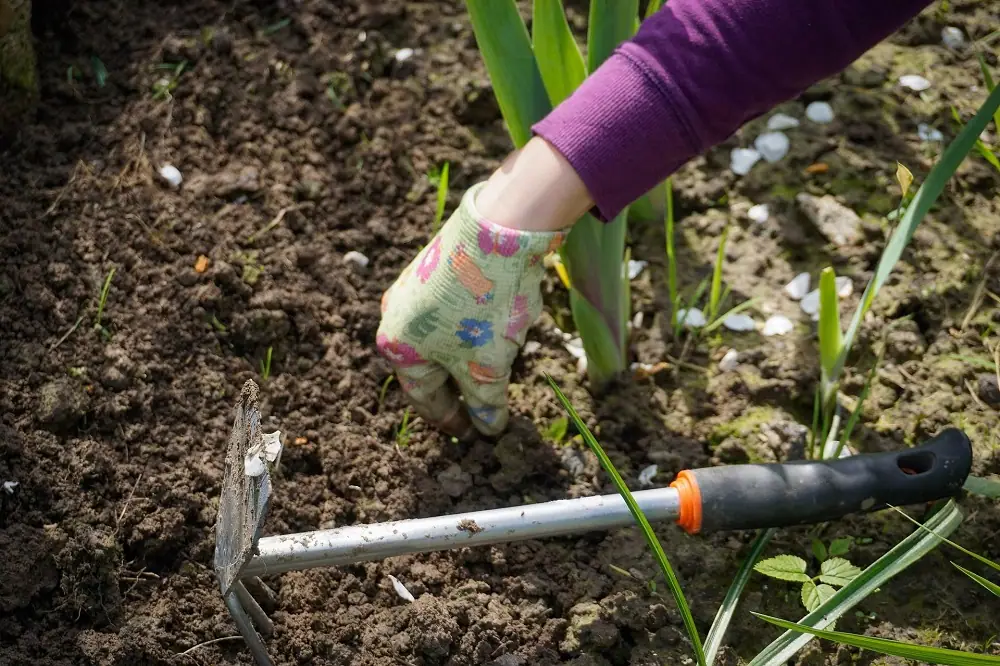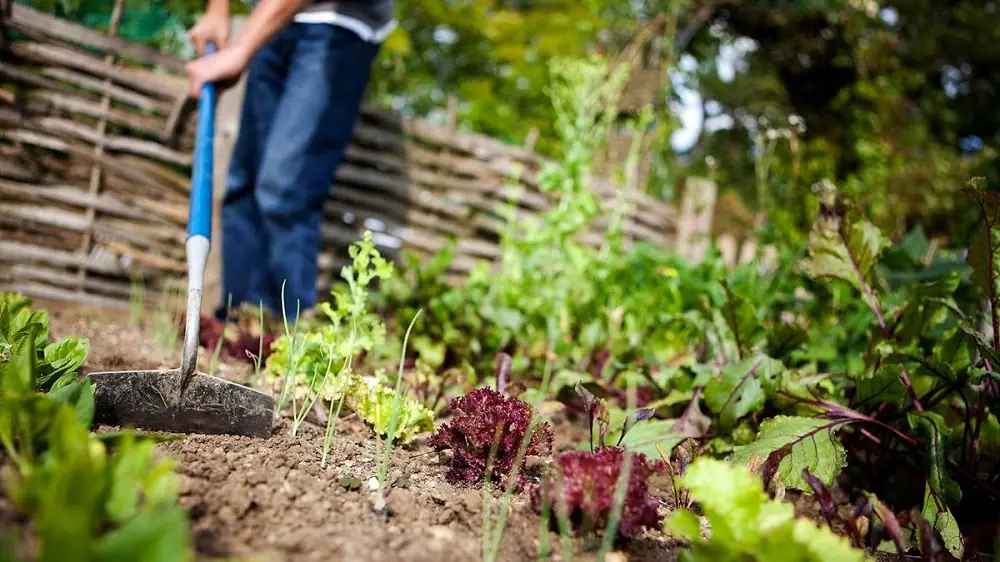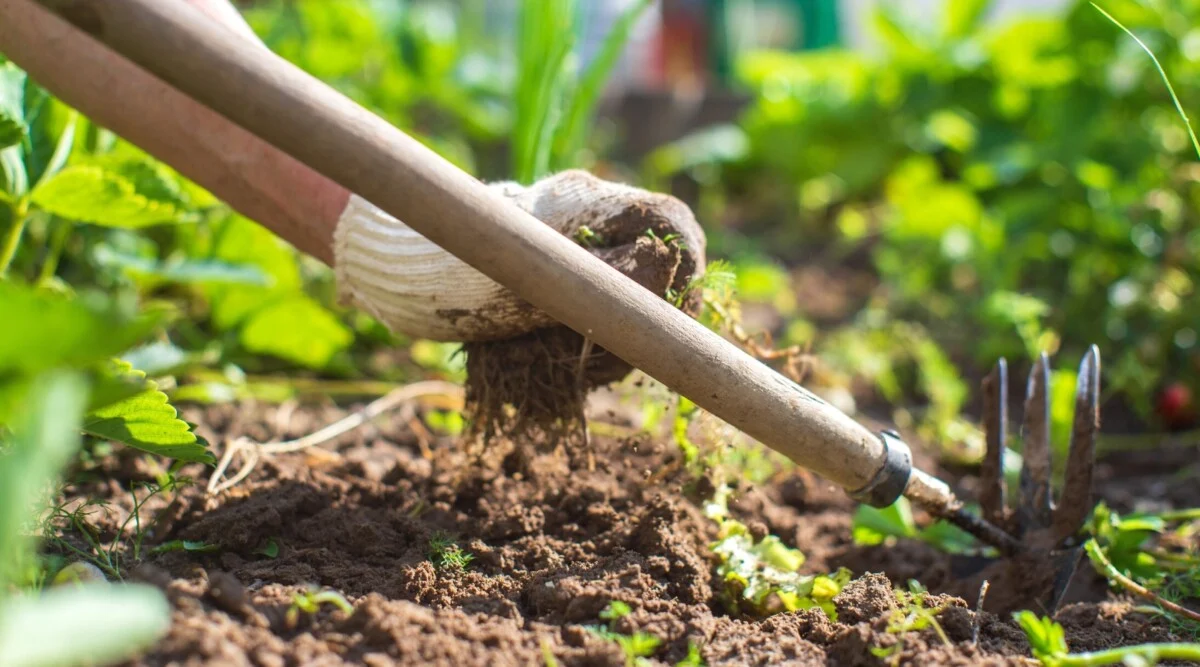The hand weeding hoe is a compact and essential tool for gardeners who value precision. Its small size makes it perfect for close-up work, allowing you to navigate around delicate plants without causing damage. Whether you’re tending to container gardens or raised beds, this hoe shines in tight spaces where larger tools would struggle.
Design and Functionality
This tool features a narrow blade that allows for targeted weeding, focusing on individual weeds rather than uprooting surrounding plants. This precision is crucial when working with tender seedlings or flowers that require extra care.
Benefits of the Hand Weeding Hoe
- Accessibility: Its lightweight design reduces fatigue during lengthy gardening sessions.
- Versatility: Ideal for various gardening scenarios, from urban gardens to community plots.
- Control: The compact nature provides superior control, making weeding less of a chore.
Using a hand weeding hoe can elevate your gardening experience, ensuring that even the most delicate plants remain unharmed. With this tool in your arsenal, you’ll find weeding more efficient and enjoyable.
As we explore further, each type of hoe serves unique purposes, revealing the depth of options available to gardeners.
Benefits of Flame Weeding
Flame weeding stands out as an innovative, chemical-free method for managing weeds, making it a go-to choice for organic farmers. This technique not only aligns with the principles of organic farming but also effectively targets a variety of weed types.
Chemical-Free Weed Control Method
By relying on heat instead of harmful chemicals, flame weeding promotes a healthier ecosystem. It helps in reducing chemical runoff that can pollute water sources and harm beneficial organisms in the soil. This method allows farmers to maintain their commitment to organic practices while ensuring effective weed control.

Effectiveness on Various Weed Types
Flame weeding is versatile; it can tackle numerous weed species, including annuals and some perennials. The intense heat disrupts the plant’s cellular structure, leading to quick destruction. Farmers often find that flame weeding can be particularly effective on smaller, younger weeds, making it a valuable tool during early growth phases.
Reduced Soil Disturbance Compared to Mechanical Methods
Unlike mechanical weeding, which can disturb soil layers and affect soil health, flame weeding minimizes disruption. The process does not uproot the weeds, preserving the existing soil structure and microorganisms vital for healthy crop growth. This method ensures that soil remains intact, promoting better aeration and moisture retention.
The advantages of flame weeding highlight its role as a practical and sustainable weed management strategy, paving the way for further discussions on crop compatibility and timing in the next section.
Choosing the Right Weeding Hoe
Selecting the perfect weeding hoe can transform your gardening experience. Here are some factors to consider:
Garden Size and Layout
- Small Gardens: For tight spaces, opt for compact hoes like the hand weeding hoe or a swoe hoe.
- Large Areas: If you have a big garden, tools like the wheel hoe or scuffle hoe can help cover more ground quickly.
Soil Type
- Soft Soils: Lightweight hoes like the collinear hoe work well for shallow cultivation.
- Hard or Compacted Soils: Heavy-duty options like the grub hoe are more effective for tougher tasks.
Physical Ability
Choose a hoe that matches your comfort level. Ergonomic designs, such as the stirrup hoe, can reduce strain and make gardening easier.
Maintenance Tips
To prolong the life of your hoe:
- Clean it after each use to prevent rust.
- Sharpen blades regularly for better efficiency.
- Store in a dry place to avoid moisture damage.
Benefits of Multiple Hoes
Owning different types of hoes allows you to tackle various tasks more effectively. It’s like having a toolbox at your disposal; each tool has its specialty.
By understanding these factors, you can choose the right weeding hoe that suits your needs and enhances your gardening journey. Next, we’ll explore different types of weeding hoes in detail, starting with the draw hoe.
Crop Compatibility and Timing
Suitable Crops for Flame Weeding
Flame weeding can be a game changer for various crops, especially those that are resilient to heat. Commonly compatible crops include:
- Vegetables: Such as tomatoes, peppers, and squash, which generally withstand brief exposure to high temperatures.
- Row Crops: Corn and soybeans often thrive with the careful application of flame weeding.
- Fruiting Plants: Certain berries and melons can also benefit from this method.
Optimal Growth Stages for Application
Timing is crucial when applying flame weeding. The best growth stages for effective treatment are:
- Early Growth Stage: Targeting weeds when they are small and tender maximizes effectiveness.
- Pre-emergence: Applying before crop emergence helps manage weeds without harming young plants.
- Post-emergence: After the crops have established, flame weeding can still be effective but requires careful monitoring.
Considerations for Crop Sensitivity to Heat
While many crops are compatible, sensitivity varies. It’s essential to consider:
- Heat Tolerance: Some crops may suffer from excessive heat, particularly delicate seedlings.
- Moisture Levels: Dry plants may be more susceptible to damage, so ensure adequate hydration before treatment.
- Local Conditions: Different climates may affect how crops respond to flame weeding; always tailor your approach to local conditions.
Understanding these aspects ensures that flame weeding enhances your organic farming practices rather than complicating them. With the right timing and crop selection, you can achieve effective weed control.
As you refine your flame weeding strategy, it’s important to consider how it fits into a broader weed management approach.
Environmental Impact
Flame weeding stands out as an eco-conscious alternative to chemical herbicides, making it a game-changer in organic farming. Unlike many traditional weed control methods that rely on synthetic chemicals, flame weeding harnesses heat to eliminate unwanted plants. This means fewer harmful substances are released into the environment, promoting cleaner air and water.
Effects on Soil Health and Biodiversity
When applied correctly, flame weeding minimizes soil disturbance, preserving its structure and the vital microorganisms that thrive within it. Healthy soil is essential for robust crop growth and overall farm productivity. Additionally, this method encourages biodiversity by reducing reliance on chemicals that can harm beneficial insects, earthworms, and other organisms that contribute to a balanced ecosystem.
Carbon Footprint Considerations
One of the most compelling aspects of flame weeding is its potential for a lower carbon footprint compared to conventional herbicide use. While the production and application of chemical herbicides often involve significant energy consumption and greenhouse gas emissions, flame weeding offers a more sustainable option. It requires less energy input, especially when compared to mechanical weeding methods, thereby contributing to a reduction in overall environmental impact.
Next, we’ll explore safety precautions to ensure effective flame weeding practices while minimizing risks.
Safety Precautions
Flame weeding can be a game-changer for organic farming, but it’s crucial to prioritize safety to ensure effective use. Here are some essential safety precautions:
Proper Equipment Handling and Maintenance
Using flame weeding equipment safely starts with proper handling. Always familiarize yourself with the operation manual before use. Regular maintenance checks are vital; inspect hoses, connections, and ignition systems for leaks or wear. Keeping equipment clean prevents buildup that could lead to malfunctions or hazards.
Fire Safety Measures and Regulations
Implementing fire safety measures is non-negotiable. Always have a fire extinguisher readily accessible when performing flame weeding. Be aware of local regulations regarding open flames, especially during dry seasons. It’s wise to create a firebreak around the area you’re working in to prevent unintended spread.
Personal Protective Equipment Requirements
Wearing the right personal protective equipment (PPE) is essential. This includes heat-resistant gloves, protective eyewear, and long sleeves to guard against burns. Sturdy boots will protect your feet from falling debris. Ensure your PPE is in good condition and fits properly to maximize safety.
By adhering to these guidelines, you can enjoy the benefits of flame weeding while minimizing risks. With safety firmly in place, you can confidently explore how this method integrates with other weed management strategies.
Cost-Effectiveness
Flame weeding stands out as a cost-effective weed management strategy for organic farmers. While the initial investment in equipment like propane torches or flamers may seem daunting, the long-term savings are significant. By reducing reliance on chemical herbicides, farmers can cut costs related to purchasing and applying these products over time.
Initial Investment vs. Long-Term Savings
The upfront costs of flame weeding tools can vary. Handheld torches are relatively inexpensive, while tractor-mounted flamers represent a higher investment. However, once acquired, these tools can last for years with proper maintenance. In contrast, chemical herbicides must be purchased repeatedly, leading to ongoing expenses that can quickly add up.
Comparison to Other Weed Control Methods
When compared to mechanical methods, such as tilling, flame weeding incurs lower operational costs. Tillage not only requires fuel but also can lead to soil degradation and loss of beneficial organisms. Flame weeding, on the other hand, preserves soil integrity and promotes a healthier ecosystem while efficiently targeting weeds.
Factors Affecting Operational Costs
Several factors influence the overall cost-effectiveness of flame weeding. For example, the scale of the operation can impact how much fuel is consumed during each application. Additionally, local regulations regarding fire safety may require specific training or equipment, which could affect initial costs. Farmers should consider these variables when evaluating their weed management options.
As flame weeding continues to gain traction in sustainable farming practices, it’s clear that understanding its cost dynamics is crucial. This method not only aligns with eco-friendly principles but also enhances the economic viability of organic farming.
Moving forward, it’s essential to explore how flame weeding can complement other weed management strategies for optimal results.
Limitations and Challenges
Flame weeding, while innovative, does come with its own set of limitations and challenges that farmers need to consider.
Weather Dependencies and Restrictions
One major aspect is the reliance on weather conditions. Windy days can create a hazardous environment for flame weeding, as flames may drift and unintentionally harm desirable crops or nearby vegetation. Rain can also impede the effectiveness of the process since moisture can reduce the heat’s impact on weeds. Consequently, farmers often have to be strategic in choosing their timing, which can be frustrating.
Effectiveness on Perennial Weeds
Another challenge is dealing with perennial weeds. These stubborn plants often have deep root systems that withstand the heat better than annual weeds. While flame weeding is excellent for controlling young, tender weeds, perennials may require multiple applications or supplemental methods to achieve effective control. This can be time-consuming and labor-intensive.
Potential Crop Damage if Misapplied
Lastly, there’s the risk of crop damage. If farmers miscalculate the distance or duration of exposure to heat, even heat-resilient crops can suffer. This calls for careful monitoring and practice to ensure that crops remain unharmed during the weeding process.
Understanding these limitations is crucial for optimizing flame weeding strategies. As we explore how flame weeding can integrate with other weed management techniques, it becomes clear that a holistic approach can maximize its benefits while addressing its challenges.
Integration with Other Weed Management Strategies
Combining flame weeding with various practices can amplify its effectiveness and create a more resilient organic farming system. This approach embraces the idea that no single method is perfect, especially considering the limitations identified in previous discussions.

Combining Flame Weeding with Cultural Practices
Integrating flame weeding with cultural practices can enhance weed management while promoting crop health. For example:
- Crop Rotation: This reduces weed seed banks and disrupts the life cycle of persistent weeds.
- Cover Cropping: By planting cover crops, farmers can suppress weeds naturally, allowing flame weeding to target only the most troublesome species.
- Mulching: Organic mulches can provide additional weed suppression, reducing the frequency of flame weeding applications needed.
Use in Integrated Pest Management Systems
Flame weeding fits seamlessly into integrated pest management (IPM) systems. By controlling weed populations, it reduces habitat for pests and diseases, which can lead to healthier crops. When used alongside biological controls and resistant varieties, flame weeding becomes part of a comprehensive strategy that minimizes reliance on chemical inputs.
Complementary Organic Weed Control Methods
Flame weeding also pairs well with other organic methods. Farmers can use techniques like hand weeding and hoeing alongside flame weeding for precision control. This blend offers an effective way to manage weed pressure without compromising soil health or biodiversity.
By weaving flame weeding into the broader fabric of sustainable agriculture, farmers can address weed challenges more holistically, setting the stage for exploring future innovations in this dynamic field.
Future Developments and Innovations
Advancements in Technology
Flame weeding is on the brink of a technological revolution, equipped with advancements that promise to enhance its efficiency. New equipment designs are emerging, such as automated flame weeders that can navigate fields autonomously. These machines are often equipped with sensors to detect weeds, allowing for precision targeting. This not only optimizes fuel use but also enhances safety by minimizing human error.
Potential for Automation and Precision Agriculture
The integration of flame weeding with precision agriculture tools is particularly exciting. By utilizing GPS technology and drones, farmers can conduct targeted applications based on real-time data about weed populations. This shift towards automation makes flame weeding more accessible and less labor-intensive, meaning organic farmers can manage larger areas without compromising on effectiveness.
Ongoing Research and Improvements
Continued research into flame weeding techniques is vital for advancing this method’s application in various crops. Researchers are exploring heat tolerance levels of different plants to ensure compatibility and minimize crop stress. Additionally, studies are investigating hybrid approaches that combine flame weeding with other organic controls, offering a comprehensive solution to weed management challenges.
As these innovations unfold, they’ll undoubtedly shape the future landscape of organic farming, paving the way for smarter, more sustainable practices.
